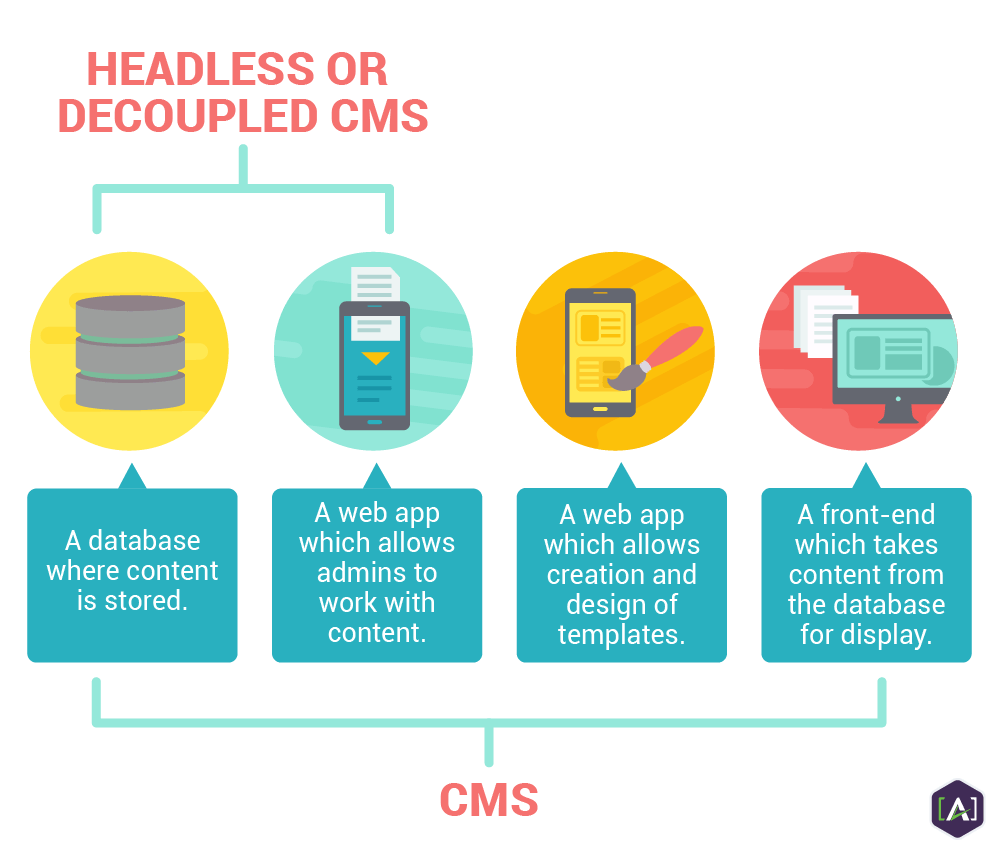
CMS (content management system) is a system that centrally manages website content. Websites are interacted with from a variety of devices and channels, requiring sites to provide a consistent customer experience.
Headless CMS is a CMS that has been gaining attention in recent years because it allows users to freely design display settings. Compared to traditional CMS, it has faster display speed and has the advantage of being less susceptible to cyber attacks.

This article provides an easy-to-understand overview of headless CMS and the differences from traditional CMS.
What is headless CMS?
Websites and applications operate on a “front end” that is visible to users and a “back end” that is invisible to users. The front end is the part that runs on the web browser, and the back end is the part that runs on the server.

A headless CMS is a CMS that does not have front-end functionality. It only has a backend function to manage content, and there is no mechanism to display content. The “head” in headless refers to its appearance, and “headless” means that it does not have any visual elements.

With a headless CMS, the parts of the design and layout that are visible to users are not fixed, and you can freely design them in a way that is optimal for the delivery destination. Because the front end and back end are completely separate, there are no restrictions on each other, and development and modification work can proceed independently.
When implementing a headless CMS, it is necessary to prepare front-end elements externally, and output the content obtained from the CMS to the external front-end. For this collaboration, a so-called “API”, a function that exposes some of the CMS’s functions and shares them with other applications, is essential. Headless CMS retrieves content via API, so engineers who can handle API are required.

Differences between headless CMS and traditional CMS
A traditional CMS refers to a CMS that has both front-end and back-end functionality. WordPress is a typical conventional CMS used around the world, and it is an easy-to-use CMS that provides all the functions necessary for creating and operating a website. Conventional CMSs have the advantage of being easy to use, even for people without specialized knowledge, as they are pre-installed with elements for “content display” that are visible to the user, and “content management” elements that are invisible to the user.
Unlike a traditional CMS, which provides content display and management functions all at once, a headless CMS provides only a management layer. Headless CMS requires an external display layer and requires specialized knowledge compared to traditional CMS. However, headless CMS has an extremely high degree of freedom in display screens, and can support a variety of devices and channels by increasing the number of API recipients. Traditional CMS specializes in a single channel, but headless CMS allows you to use the same content for computers, smartphones, apps, etc.

Additionally, since the front end and back end of a headless CMS are separated, it is less susceptible to cyber attacks and has the advantage of reducing security risks. On the other hand, traditional CMSs that cover all display screens, management screens, and databases have vulnerabilities that make them easy targets for attacks.
.png?auto=compress,format)
Issues and future of headless CMS
Headless CMSs that can deliver the same content to all channels are expected to continue to innovate in order to provide end users with a personalized web experience. However, since a headless CMS requires engineers with specialized knowledge, there is a concern that content management will be concentrated on engineers. If you outsource development to an external company, costs will increase and the speed of content operation will decrease, which can also be a bottleneck.

What is attracting attention is a “hybrid CMS” that combines an easy-to-use conventional CMS with a highly flexible headless CMS. Hybrid CMS can support a variety of channels, and enables efficient site operation by separating the work flows of practitioners and engineers. Hybrid CMS, where traditional CMS and headless CMS coexist, is becoming a new trend that compensates for the weakness of headless CMS, which is that it is difficult to operate a website without engineers.

summary
◆A headless CMS is a CMS that does not have front-end functionality, but only has back-end functionality to manage content.

◆Headless CMS has an extremely high degree of freedom in display screens, and can support a variety of devices and channels by increasing the number of API recipients.
◆A conventional CMS is a CMS that has both front-end and back-end functions, and provides all the functions necessary for website production and operation.

◆In order to compensate for the weaknesses of headless CMS, which require specialized knowledge, “hybrid CMS”, which combines an easy-to-use conventional CMS and a highly flexible headless CMS, is becoming a trend.

